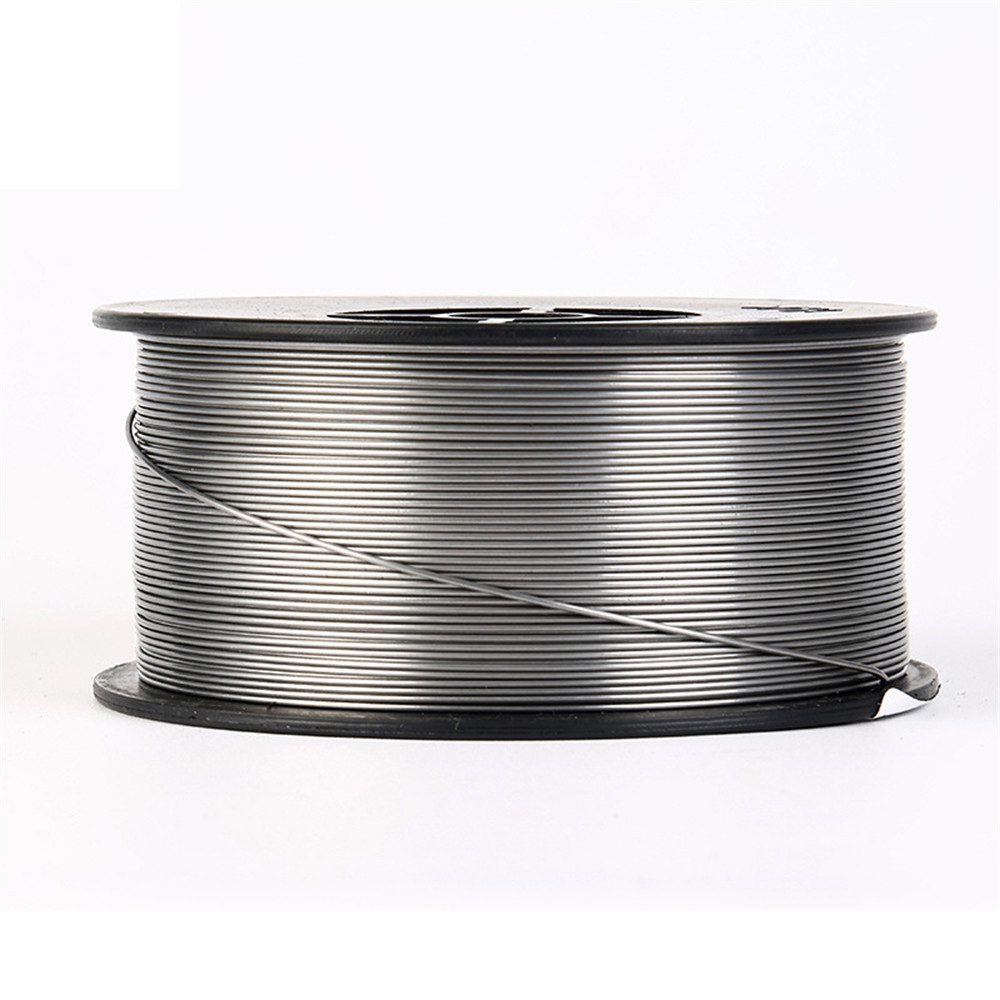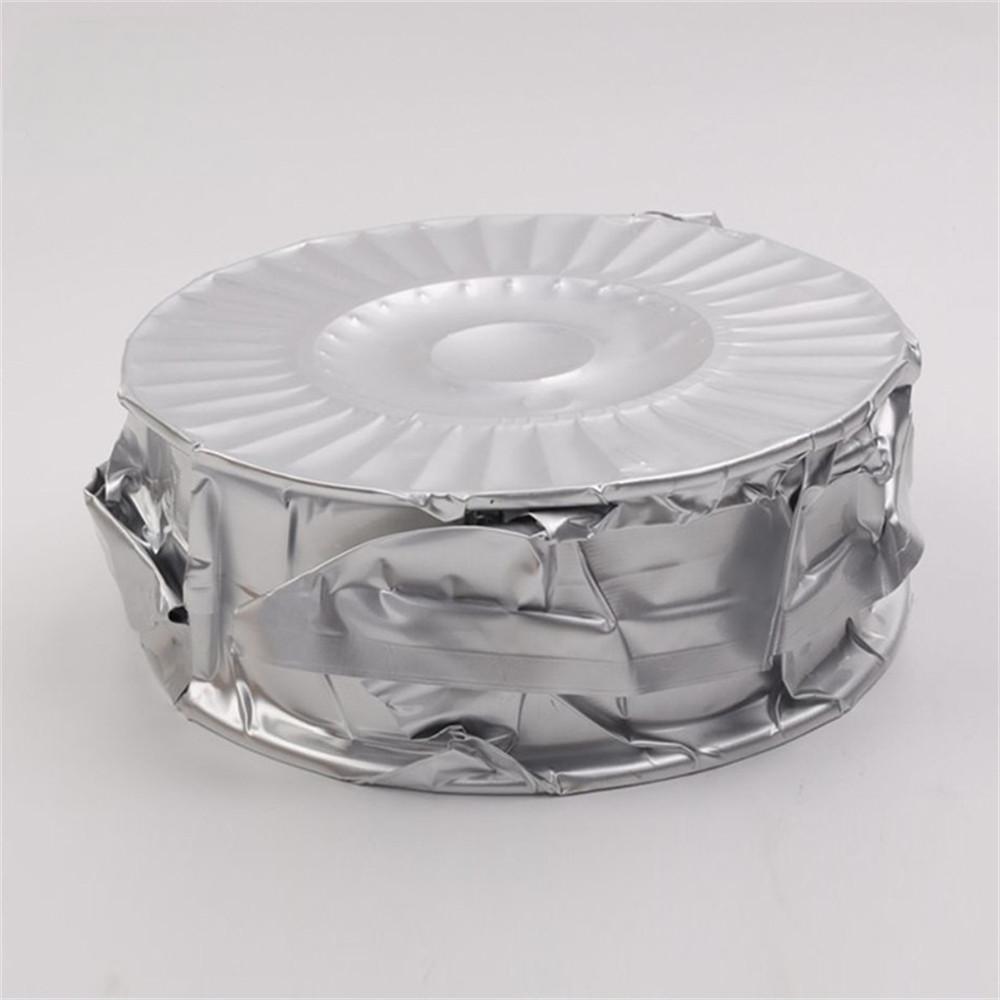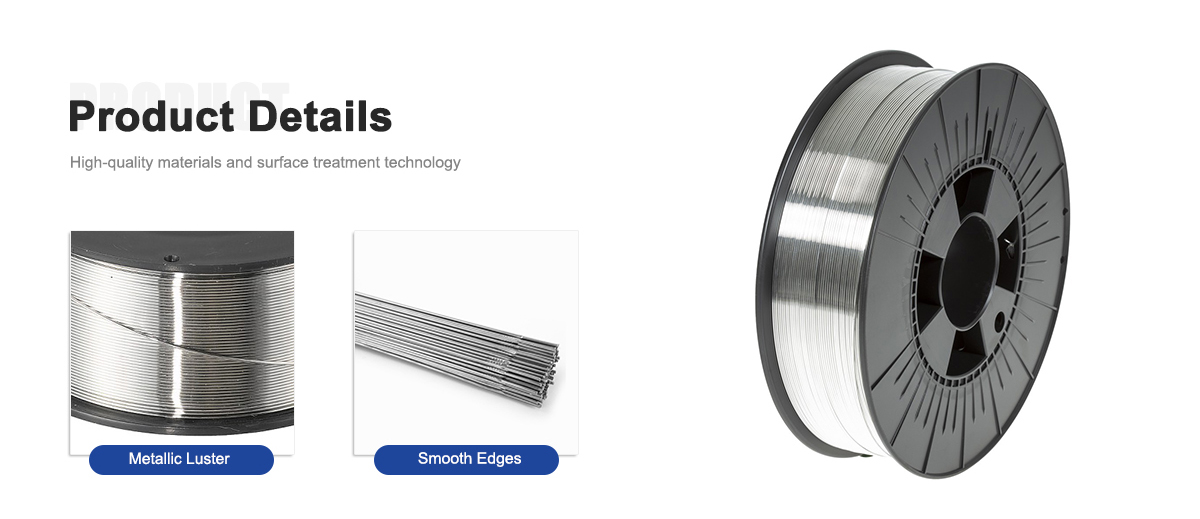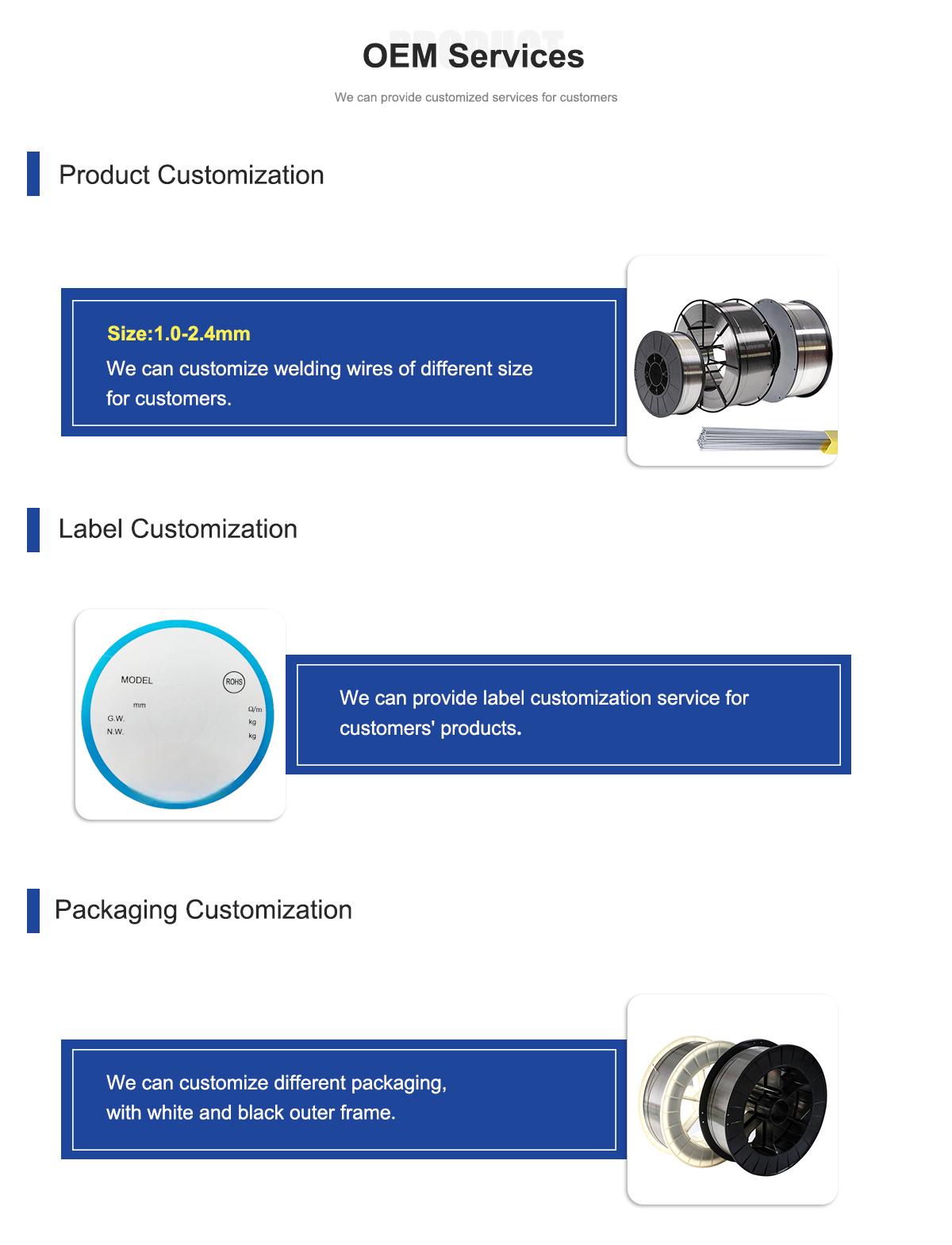 0
0
Products Description

Nickel-based welding wire is widely used in the field of electronic component welding. As an important soldering material, nickel-based solder wire plays a key role in the electronic manufacturing process and is used to connect, repair and encapsulate various electronic components.
Nickel-based soldering wire offers several advantages in soldering electronic components. First, it has good electrical and thermal conductivity. In electronic equipment, reliable current and heat transfer between electronic components is required, and nickel-based solder wire can provide low resistance and high thermal conductivity welding joints to ensure good connections between components and efficient energy transfer.
Secondly, nickel-based welding wire has good corrosion resistance and stability. Electronic equipment is often exposed to corrosive media such as humidity, acid and alkali solutions, and chemicals. Nickel-based welding wire can resist the erosion of these corrosive substances and maintain the stability and durability of welded joints, thus improving the reliability and service life of electronic equipment. .
In addition, nickel-based welding wire also has good plasticity and processability, making it easy to cope with the small size and complex shape requirements of electronic components. It can adapt to the deformation and stress concentration of electronic components, reduce stress concentration caused by thermal expansion and contraction, and reduce the risk of cracking and failure of welded joints.
In the process of welding electronic components, it is crucial to select the appropriate nickel-based wire material and welding process. Factors such as the characteristics of the component material, the requirements of the welding joint, and the welding temperature and time need to be considered to ensure the stability of the welding quality and component performance. At the same time, quality control and welding monitoring are also critical steps to ensure the quality of welded joints and compliance with relevant standards and requirements for electronic manufacturing.
 Welding series:
Welding series:
ERNiCrMo-3,ERNiCrMo-4,ERNiCrMo-13,ERNiCrFe-3,ERNiCrFe-7,ERNiCr-3,ERNiCr-7,ERNiCu-7,ERNi-1, ER70S-6.
Standard: Conforms to Certification AWS A5.14 ASME SFA A5.14
Size: 0.8MM / 1.0MM / 1.2MM / 1.6MM / 2.4MM / 3.2MM / 3.8MM / 4.0MM / 5.0MM
Form: MIG(15kgs/spool), TIG(5kgs/box),Strip
Product parameters:

Main component: nickel alloy (nickel is the main component, including other alloy elements)
Diameter range: usually between 0.1mm and 1.6mm, can be adjusted according to specific application requirements
Strength: has appropriate strength and good mechanical properties
Corrosion resistance: able to resist corrosion from corrosive media and chemicals used in the manufacturing process of electronic components
High temperature performance: able to withstand high temperatures and maintain stability during welding
Item | ERNiCrMo-3 | ERNiCrMo-4 | ERNiCrMo-13 | ERNiCrFe-7 | ERNiCr-3 | ERNiCu-7 | ERCuNi | ERNi-1 |
C | 0.1 | 0.02 | 0.01 | 0.04 | 0.1 | 0.15 | 0.03 | 0.15 |
Mn | 0.05 | 1 | 0.5 | 1 | 2.5-3.5 | 4 | 0.5-1.0 | 1 |
Fe | 5 | 4-7 | 1.5 | 7-11 | 3 | 2.5 | 0.65 | 1 |
P | 0.02 | 0.04 | 0.015 | 0.02 | 0.03 | 0.02 | 0.01 | 0.03 |
S | 0.015 | 0.03 | 0.005 | 0.015 | 0.015 | 0.015 | 0.01 | 0.015 |
Si | 0.05 | 0.08 | 0.1 | 0.5 | 0.5 | 1.25 | 0.15 | 0.75 |
Cu | 0.5 | 0.5 | N/A | 0.3 | 0.5 | rest | rest | 0.25 |
Ni | ≥58 | rest | rest | rest | ≥67 | 62-69 | 30-32 | ≥93 |
Co | N/A | 2.5 | 0.3 | N/A | N/A | N/A | N/A | N/A |
Al | 0.4 | N/A | 0.1-0.4 | 1.1 | N/A | 1.25 | 0.15 | 1.5 |
Ti | 0.4 | N/A | N/A | 1 | 0.75 | 1.5-3 | 0.5 | 2-3.5 |
Cr | 20-23 | 14.5-16.5 | 22-24 | 28.5-31 | 18.0-22.0 | N/A | N/A | N/A |
Nb+Ta | 3.5-4.15 | N/A | 1.8-2.5 | 0.01 | 2.0-3.0 | N/A | N/A | N/A |
Mo | 8.0-10 | 15-17 | 15-16 | 0.5 | N/A | N/A | N/A | N/A |
V | N/A | 0.35 | N/A | N/A | N/A | N/A | N/A | N/A |
W | N/A | 3.0-4.5 | N/A | N/A | N/A | N/A | N/A | N/A |
Rest | ≤0.50 | ≤0.50 | ≤0.50 | ≤0.50 | ≤0.50 | ≤0.50 | ≤0.50 | ≤0.50 |
Nickel and Nickel Alloy Welding Wire | |
Product Model (AWS) | Application |
ERNiCr-3 | For welding 600, 601 and 800 alloys themselves, and welding dissimilar steels between stainless steel and carbon steel ERNiCrFe-7; For welding Inconel alloys within ASTM B163, 166, 167 and 168 |
ERNiCrFe-6 | For welding of steel and Inconel, welding of steel and stainless steel and nickel-based alloys |
ERNiCrCoMo-1 | Dissimilar welding for welding nickel-chromium-cobalt-molybdenum alloys and various superalloys |
ERNiCrMo-3 | It is used for welding of nickel alloy, carbon steel, stainless steel and low alloy steel, mainly used for welding of 625, 601, 802 alloy and welding of 9% nickel alloy |
ERNi-CI | Industrial pure nickel for welding malleable and grey cast iron |
ERCuNi | For welding of 70/30, 80/20, 90/10 copper-nickel alloys |
ERNiCu-7 | For welding nickel copper alloys B127, 163, 164 and 165 etc. |
ERNi-1 | For welding of pure nickel castings and forgings such as alloys within ASTM B160, 161, 162, 163 |
ERNiFeMn-CI | For welding of nodular cast iron, ductile iron, malleable cast iron and grey cast iron to itself or to stainless steel, carbon steel, low alloy steel and various nickel alloys |
ERNiCrMo-4 | For welding nickel-chromium-molybdenum alloy itself, or welding nickel-chromium-molybdenum alloy and steel and most other nickel-based alloys |
ERNiCrMo-11 | It is used for welding of nickel-chromium-molybdenum alloy itself, or welding of nickel-chromium-molybdenum alloy and steel and most other nickel-based alloys, and can also be used for surfacing welding of nickel-chromium-molybdenum alloy and steel welding seam |
ERNiCrMo-13 | For welding low carbon nickel chromium molybdenum alloys |


Product Features:

Solderability: Nickel-based welding wire has good solderability and can perform good welding with common metal leads (such as copper, nickel, gold) on electronic components, ensuring the quality and reliability of the welded joints.
Corrosion resistance: Nickel-based welding wire has good corrosion resistance and can resist oxidation, acidic and alkaline environments during the welding process, reducing the risk of welded joint failure due to corrosion.
High temperature performance: Nickel-based welding wire can withstand high temperatures during the welding process and has a high melting point and thermal stability, ensuring the stability and reliability of the welded joint in high-temperature environments.
Size adjustability: Nickel-based welding wire has a wide diameter range and can be selected and adjusted according to different electronic component sizes and welding requirements to improve welding accuracy and controllability.
Specific applications:

Nickel-based welding wire has a wide range of applications in the field of welding electronic components, including but not limited to the following:
Surface Mount Technology (SMT) Soldering: Used to connect electronic components to metal leads on the PCB substrate.
Wire bonding: used to connect metal leads between electronic components, such as the connection of internal circuits of a chip.
Electronic component repair: Used to repair or replace soldered joints in electronic components to ensure the normal operation of electronic equipment.
Other relevant knowledge points:

The temperature and welding parameters during the welding process are crucial to the quality and reliability of welded electronic components, and parameters such as welding temperature, welding time and welding pressure need to be strictly controlled.
The selection of nickel-based welding wire should take into account the characteristics, welding conditions and requirements of electronic components to ensure the quality, electrical performance and reliability of the welded joint.
When welding electronic components, you need to comply with relevant welding standards and specifications to ensure that the welding process meets industry requirements and the quality standards of electronic products.

FAQ:

What corrosive media can nickel-based welding wire resist?
Nickel-based welding wire can resist corrosive media such as acid and alkali solutions, salt solutions and organic solvents.
What kind of material defects can nickel-based welding wire be used to fill?
Nickel-based welding wire can be used to fill surface defects in nickel alloy materials and repair damage to parts.
What kind of performance can nickel-based welding wire maintain in high temperature environments?
In high-temperature environments, nickel-based welding wires can maintain high strength and toughness and are not prone to deformation and fracture.

E-mail: Info@hulkalloy.com
Mobile: 0086 13852926463
Tel: 0086 13852926463
Whatapps: 0086 13852926463
Add: Renli Village, Fangxian Town, Danyang City, Jiangsu Province, China